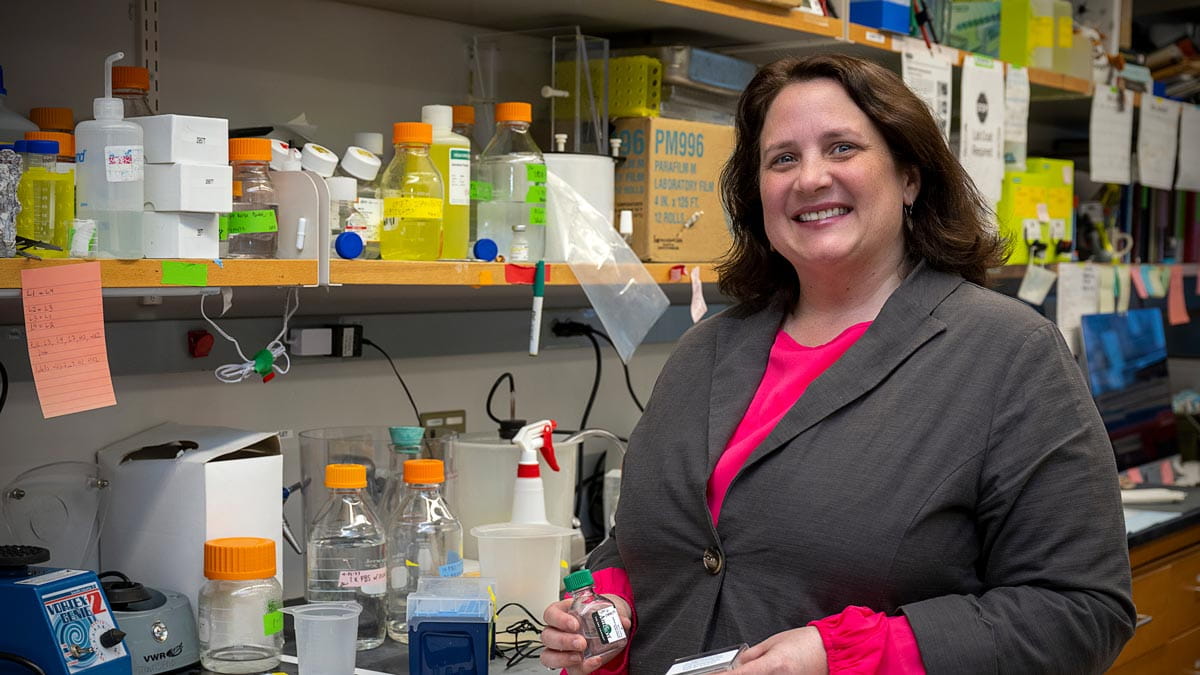Kristy Townsend, PhD, receives prestigious research award from W.M. Keck Foundation to study brain and adipose tissue connections
 The W.M. Keck Foundation awarded $1.2 million to a multi-center team, led by researchers at The Ohio State University College of Medicine and The Ohio State University Wexner Medical Center, to explore the neural feedback loop between the brain and adipose (fat) tissue.
The W.M. Keck Foundation awarded $1.2 million to a multi-center team, led by researchers at The Ohio State University College of Medicine and The Ohio State University Wexner Medical Center, to explore the neural feedback loop between the brain and adipose (fat) tissue.
The team, led by Kristy Townsend, PhD, associate professor of Neurological Surgery at the Ohio State College of Medicine and a researcher with the Dorothy M. Davis Heart and Lung Research Institute, Diabetes and Metabolism Research Center, Comprehensive Cancer Center and Neuroscience Research Institute, leads in the investigative process of using mouse models to evaluate how and which lipids (fatty compounds that help maintain certain cellular functions) are communicated to the brain by nerves in adipose tissue.

This new funding has steered the team to determine that adipose sensory nerves are likely ‘nociceptors,’ or sensors of noxious stimuli, or stimuli strong enough to damage or threaten the body tissue. This breakthrough process and its outcomes exist through a collaboration with a number of Ohio State departments and divisions and external collaborators at the University of Maine, University of New England, the National Institutes of Health, and Berg, a biotech company.
Dr. Townsend says the interdisciplinary consortium spans neuroscience, advanced imaging, lipid biochemistry and metabolic health and holds the promise of scientific breakthroughs that can improve lives now and in the future.
“We will collect foundational data about the function of adipose sensory nerves and the diversity of information they communicate to the brain,” Dr. Townsend says. “The aim is to understand how the use of adipose may help maintain healthy tissue functions and prevent metabolic diseases like obesity.”
They also plan to investigate the loss of neural communication between the tissue and the brain and how this important communication route of noxious stimuli may be lost.
“Communication to the brain via the sensory nerves is a significantly understudied aspect of the basic biology of adipose tissue function,” Dr. Townsend says. “We lack an understanding of how these nerves respond to local signals, including lipids, and whether they serve as a neuronal ‘fuel sensor’ for the brain.”
The Townsend Lab is one of only a handful of labs around the world specifically working at the interface of metabolism, adipose tissue plasticity and function, metabolic health and the role of the brain and peripheral nerves in these systems.
Novel imaging techniques have the potential to illuminate the function of these sensory nerves by determining what roles they play in metabolism, including sensing and communicating the types and quantities of lipids stored in adipose tissue for fuel.
“This potential feedback loop may be harnessed in the future to drive beneficial sensory nerve signals from adipose tissue to the brain to promote metabolic health and decrease risk factors for associated illnesses such as diabetes, cardiovascular disease and numerous cancers,” Dr. Townsend says.
This adipose sensory nerve function research, co-authored by Dr. Townsend and Gargi Mishra, PhD candidate in the Molecular, Cellular and Development Biology Graduate Program at Ohio State, was just published in a high-impact review in Nature Metabolism.
The W.M. Keck Foundation is an American philanthropic foundation supporting scientific, engineering, education, community service and medical research in the United States.
Explore more stories of innovation, clinical care, education and community outreach at The Ohio State University College of Medicine.
VIEW ANNUAL REPORT
